Multidimensional Poverty in India (Indian Express)
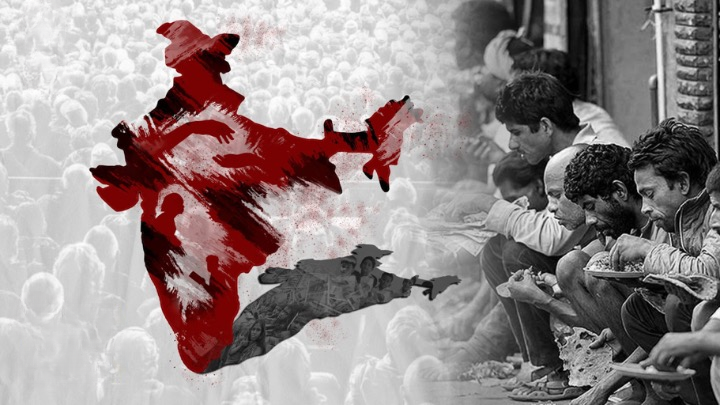
- 03 Feb 2024
Why is it in the News?
Recently, In her Interim Budget speech, the Union Finance Minister informed that nearly 25 crore people have been raised from multi-dimensional poverty in the last 10 years.
What is Multidimensional Poverty?
- Multidimensional Poverty refers to the complex nature of poverty, where individuals or communities experience various simultaneous disadvantages.
- These may include inadequate health, malnutrition, limited access to clean water and electricity, substandard living conditions, and limited educational or employment opportunities.
- Merely focusing on income as a poverty indicator fails to fully grasp the depth and breadth of deprivation experienced by individuals.
- Multidimensional Poverty recognizes that poverty encompasses more than just economic factors; it encompasses a range of dimensions that impact well-being and quality of life.
- This approach to measuring poverty incorporates not only income or consumption levels but also considers deprivations in education and access to essential infrastructure.
- The international poverty line, set at $2.15 per day (in 2017 purchasing power parity terms) by the World Bank, serves as a benchmark for evaluating monetary value but is complemented by a broader assessment of various dimensions of deprivation.
What is the Global Multidimensional Poverty Index?
- The Global Multidimensional Poverty Index (MPI) serves as a vital tool for assessing acute multidimensional poverty in over 100 developing nations.
- Published collaboratively by the Oxford Poverty and Human Development Initiative (OPHI) and the UNDP's Human Development Report Office, it provides a comprehensive framework for tracking deprivation across three key dimensions and ten indicators.
- This index operates on a scale from 0 to 1, with higher values indicating greater levels of poverty.
- According to MPI methodology, individuals experiencing deprivation in a third or more of the weighted indicators are classified as "MPI poor."
India's Progress and Comparison:
- According to the 2023 Global MPI report, India successfully uplifted 415 million people out of poverty between 2005-06 and 2019-21, marking a significant achievement in poverty alleviation efforts.
- India is among 25 nations that have effectively halved their global MPI values within 15 years.
Comparison with India's National MPI:
- In addition to the global MPI, India has its own National Multidimensional Poverty Index.
- Published by NITI Aayog, India's MPI incorporates two additional indicators:
- Maternal health (under the health dimension) and
- Bank account ownership (under the standard of living dimension).
- This modification aligns the MPI with India's specific national priorities, offering a nuanced understanding of poverty dynamics within the country.
GHAR (GO Home and Re-Unite) Portal for Restoration and Repatriation of Child (PIB)
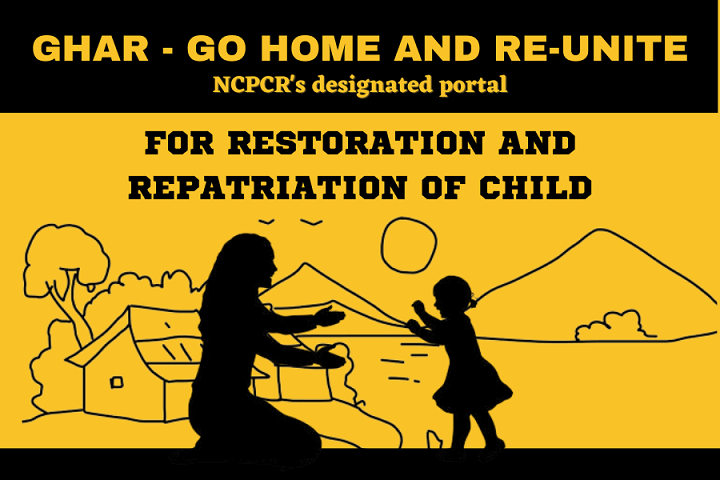
- 03 Feb 2024
Why is it in the News?
The Ministry of Women and Child Development developed the “Track Child Portal”, which enables tracking of the missing and found children in all States/UTs including Maharashtra, Chhattisgarh, North Eastern States and Jharkhand.
What is the GHAR Portal?
- National Commission for Protection of Child Rights (NCPCR) has developed and launched the portal GHAR - Go Home and Reunite, with the sole purpose of restoration and repatriation of children.
- The GHAR portal has been developed to digitally monitor and track the restoration and repatriation of children.
- Here's how the portal can help strayed children go home and reunite with their families:
- The portal digitally tracks and monitors children who are in the juvenile justice system and have to be repatriated to another country, state or district.
- It allows the digital transfer of cases of children to the Juvenile Justice Board/Child Welfare Committee of the state concerned.
- It will help in speedy repatriation of children.
- Where there is a requirement for a translator/interpreter/expert, a request will be sent to the state government concerned.
- Child welfare committees and district child protection officers can ensure proper restoration and rehabilitation of children by digitally monitoring the progress of the case of the child.
- A checklist format will be provided in the forms so that the children who are being hard to repatriate or children who are not getting their entitled compensation or other monetary benefits can be identified.
- A list of government-implemented schemes will be provided so that at the time of restoration the Child Welfare Committees can link the child with the schemes to strengthen the family and ensure that the child remains with his/her family.
- The Ministry of Women and Child Development is administering the Juvenile Justice (Care and Protection of Children) Act, 2015 (JJ Act, 2015) (as amended in 2021) and the Rules thereunder, to ensure the safety, security, dignity and well-being of children.
- The Act provides for the protection of children in need of care and protection and those in conflict with the law by catering to their basic needs through care, protection, development, treatment and social reintegration.
- Under the JJ Act, 2015, the Child Welfare Committees have been empowered to make decisions regarding the children in need of care and protection for the children’s best interest.
- They are also mandated to monitor the functioning of the Child Care Institutions (CCIs).
- Similarly, under section 106 of the JJ Act, 2015, every state government has to constitute a District Child Protection Unit (DCPU) for every district to take up matters relating to children to ensure the implementation of the JJ Act, 2015 and its rules thereunder.
- To ensure effective coordination in child safety, protection and development, District Magistrates have been made the heads of DCPUs.
- DMs have been empowered to review the functioning of DCPUs and CWCs at regular intervals to ensure prompt decisions as per provisions of the JJ Act and Rules are taken by these bodies, keeping in mind the best interests of the children.
: Law Commission of India (Indian Express)
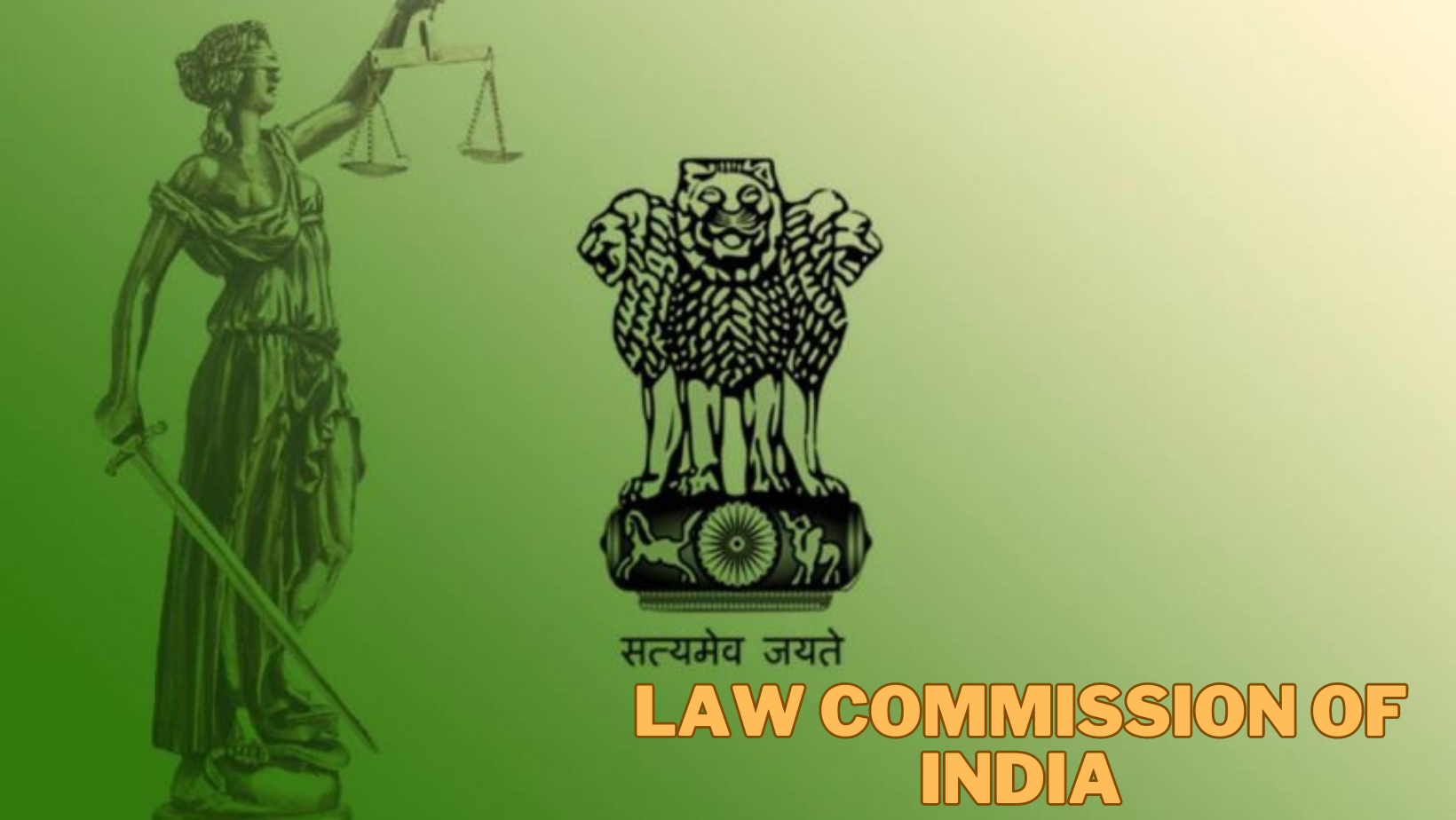
- 03 Feb 2024
Why is it in the News?
The 22nd Law Commission of India led by Justice Ritu Raj Awasthi has recommended that the offense of criminal defamation should be retained in the new criminal laws.
About the Law Commission of India:
- The Law Commission of India is a non-statutory body, constituted by the Government of India from time to time.
- The commission's function is to research and advise the government on legal reform, and is composed of legal experts, and headed by a retired judge.
- The commission is established for a fixed tenure and works as an advisory body to the Ministry of Law and Justice.
- The first Law Commission was established during colonial rule in India by the East India Company under the Charter Act of 1833 and was presided over by Lord Macaulay.
- After that, three more commissions were established in British India.
- The first Law Commission of independent India was established in 1955 for a three-year term.
- Since then, twenty-one more commissions have been established.
- The 22nd Law Commission has been notified with effect from 21st February 2020 for a term of 3 years.
- Cabinet approves the extension of the term of the 22nd Law Commission of India up to 31st August 2024.
- Justice Rituraj Awasthi (Former Chief Justice of the Karnataka HC) was appointed as the chairperson of the current 22nd Law Commission.
- The last chairman of the 21st Law Commission was retired Supreme Court judge Justice B.S. Chauhan.
The Responsibilities of the Law Commission:
- Identification of laws which are no longer relevant and recommending the repeal of obsolete and unnecessary enactments;
- Suggesting enactment of new legislations as may be necessary to implement the Directive Principles and to attain the objectives set out in the Preamble of the Constitution;
- Considering and conveying to the Government its views on any subject relating to law and judicial administration that may be specifically referred to it by the Government through the Ministry of Law & Justice (Department of Legal Affairs);
- Considering the requests for providing research to any foreign countries as may be referred to it by the Government through the Ministry of Law & Justice (Department of Legal Affairs);
- Preparing and submitting to the Central Government, from time to time, reports on all issues, matters, studies and research undertaken by it and recommending such reports for effective measures to be taken by the Union or any State; and
- Performing such other functions as may be assigned to it by the Central Government from time to time.
Govt To Sell Bharat Rice At Rs 29/Kg in Retail Market (Indian Express)
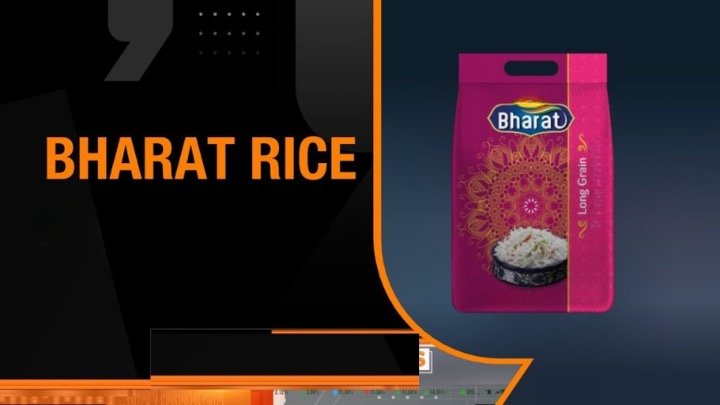
- 03 Feb 2024
Why is it in the News?
The government will launch retail sales of Bharat Rice at ?29 per kg from next week to provide relief to consumers. It has also directed traders to disclose rice stock to control prices.
Context:
- The recent announcement by the Union government regarding the retail sale of rice at Rs 29 per kg through three cooperatives has garnered attention in the news.
- This initiative, known as 'Bharat Rice,' seeks to address the upward trend in rice prices.
- Over the past year, retail prices have surged by 14.5%, while wholesale prices have seen a 15.5% increase.
- This move aims to mitigate the impact of rising rice prices on consumers and ensure the affordability and accessibility of this staple food item.
Recent Developments:
- In response to escalating domestic rice prices and to ensure food security within the country, the Union government implemented measures in 2023.
- These included a ban on the export of white (non-basmati) rice and the imposition of a 20% export duty on par-boiled rice.
- The decision to restrict rice exports was driven by the need to stabilize domestic prices and guarantee an ample food supply for the nation.
- Experts predict that these restrictions are likely to remain in place until the upcoming general election scheduled for April-May 2024.
- Challenges in rice production during the 2023-24 kharif season, exacerbated by dry weather conditions attributed to El Nino, have further complicated the supply situation.
- Despite these trade limitations, local rice prices have remained firm, prompting government warnings to retailers.
Government Intervention:
- Union Food Secretary Sanjeev Chopra highlighted a 14.51% increase in retail rice prices over the past year.
- In response to rising rice prices, the government has mandated traders, wholesalers, retailers, and processors to report their rice and paddy stocks every Friday to manage food inflation and curb speculative activities.
- To counter inflationary pressures, the government has initiated the retail sale of 'Bharat Rice' to the general populace.
- Initially, 5 lakh tonnes of rice will be allocated for retail sale under this brand through agencies like NAFED, NCCF, and Kendriya Bhandar, priced at ?29 per kilogram in 5 kg and 10 kg bags.
- Furthermore, the Food Corporation of India (FCI) has ample stocks of good-quality rice available for sale to traders and wholesalers under the open market sales scheme at a reserve price of ?29 per kilogram.
Status of India’s Rice Exports:
- India holds the position of the world's largest rice exporter, accounting for 45% of the global rice market share.
- During April-May 2023, overall rice exports witnessed a notable increase of 21.1% compared to the previous fiscal year.
- Basmati rice exports in May 2023 alone surged by 10.86% compared to May 2022, reflecting a sustained upward trend.
- The export of non-Basmati rice has been steadily rising over the past three years, with Basmati rice exports in 2022-2023 surpassing the previous year's figures.
- Recent data provided by the government indicates a 15% increase in total rice exports (excluding broken rice) by August 17 compared to the corresponding period in the previous year.
- Regional Dynamics: Thailand anticipates a nearly 25% decrease in rice production for the 2023-2024 season, while Myanmar has halted raw rice exports.
- Similarly, rice availability is expected to be limited in Iraq and Iran.
- India annually exports more than 4 million tons of basmati - a premium long-grain variety famed for its aroma - to Iran, Iraq, Yemen, Saudi Arabia, the United Arab Emirates and the United States, among others.
Three New Major Railway Corridors Announced Under PM GatiShakti in the Interim Budget 2024-25 (PIB)
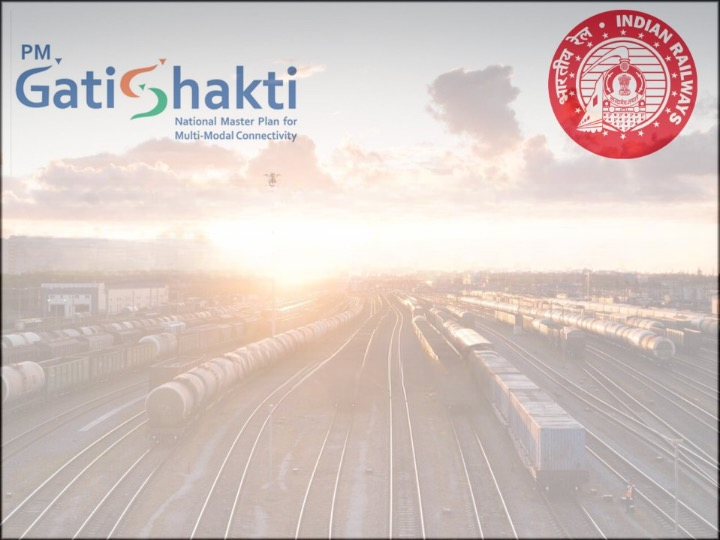
- 03 Feb 2024
Why is it in the News?
The Interim Budget for 2024-25 announcement for implementation of three Economic Railway Corridors identified under the PM GatiShakti for enabling multi-modal connectivity.
Context:
- The Interim Budget for 2024-25 has laid the groundwork for implementing three major Economic Railway Corridors under the PM GatiShakti initiative.
- This will enable multi-modal connectivity, including:
- Energy, mineral, and cement corridors
- Port connectivity corridors and
- High-traffic density corridors
Significance of the Three Corridors:
- Logistics Efficiency Boost: These Corridors serve as catalysts for enhancing logistics efficiency, thereby cutting down on the costs associated with rail transportation.
- By streamlining rail movements, they pave the way for smoother and more cost-effective logistics operations.
- Alleviating Rail Congestion: One of their primary roles is to alleviate congestion on heavily trafficked rail routes.
- By diverting some of the traffic to these designated Corridors, the strain on high-density rail networks is relieved, ensuring smoother and more reliable transportation across the board.
- Promoting Modal Shift: The Corridors play a pivotal role in encouraging a modal shift from road to rail and coastal shipping.
- By providing efficient rail connections and integrating coastal shipping options, they offer viable alternatives to traditional road transport, thereby reducing congestion on highways and minimizing environmental impact.
- Environmental Sustainability: A key benefit of these Corridors is the reduction of the carbon footprint associated with logistics operations.
- By promoting more environmentally friendly modes of transportation such as rail and coastal shipping, they contribute to mitigating the environmental impact of freight movement, fostering sustainability in logistics practices.
About PM GatiShakti National Master Plan:
- The government of India initiated the Pradhan Mantri Gati Shakti National Master Plan to transform the nation's infrastructure.
- PM Modi launched the PM Gati Shakti National Master Plan (NMP) on 13th October 2021, on the 75th Independence Day to provide multimodal connectivity infrastructure to various economic zones.
- The scheme is expected to smooth out the execution of projects across the nation and foster coordination between different ministries engaged with these projects.
Advantages of PM Gati Shakti:
- It lays out a centralised portal to unite the infrastructural initiatives of 16 central ministries and departments.
- Facilitates these ministries, gives a centralised transportation and logistics grid for smoother data flow and sped up project clearance.
- Large-scale infrastructure projects like UDAAN, expansion of the railway network, Bharatmala, Sagarmala, inland waterways, and Bharat Net will be executed by the Gati Shakti master plan.
- The Gati Shakti master plan aims to create employment potential for a large number of individuals.
- The plan's three primary targets are smooth multimodal connectivity, enhanced prioritisation and optimal usage of resources to create capacities on time, and resolution of issues like standardisation, disjointed planning and clearances.
- The Gati Shakti mission aims to create world-class infrastructure in the country and foster logistical synergy across various modes of movement.
- The general objective of the drive is to increase competitiveness and economic development in India.
